“Akemashite omedetoo gozaimasu!”
Or “Happy New Year,“ if you prefer. And what better way to celebrate the new year than read this fine piece by Kjeld Duits? The photos featured in this post were taken by Takagi Teijiro, a photographer who was active in the first two decades of the 20th century, and illustrate how the average Japanese middle class family spent the last days of the old year and the first days of the new one in the early 1900s.
New Year celebrations are far more important than any other celebration in Japan. This was even more so in the past when preparations started at least a week in advance.
New Year celebrations originally had a close connection with the challenges of agricultural life. They therefore had a strong spiritual element. But from the early 1800s on, and especially during the Meiji Period (1868-1912), New Year celebrations were increasingly urbanized and the mysticism vanished.
1. Osoji : Year-End Cleaning
A preliminary to the coming of the New Year is a general “spring cleaning,” as our friends term it. The interior and exterior of every domicile is cleaned and re-decorated. Warehouses and business houses all undergo a similar “clean out,” and we get ready for a new lease on life.
2. Pounding Rice for Mochi
Our foreign friends indulge in plum pudding; our pudding, mochi (a dough of rice), is the national diet for the celebration of the New Year Era, and also for sacred celebrations during the year. Men, with boilers and dough tubs, pound the rice into dough, and nearly every family engage these dough pounders, to save time and trouble. The pounding begins about the 25th December, and continues until the end of the year.
3. Bamboo Decorations
Bamboo poles are to be seen, erected on the eaves of various shops, to remind one of the Toshino-ichi (the New Year’s Fair), which is now in progress. The shops are also decorated in Christmas style, for the purpose of supplying foreign residents with all they may need for the festive Xmas season. The Japanese wives may be seen hurrying here and there to obtain geta, and many other items necessary for the family to bloom forth in fresh raiment on New Year’s Day.
4. Year-End Market
At other fairs, articles are arranged in booths, in Temple grounds, and here you may obtain, practically, anything, you require, and many, many people buy what they do not really need, but the attraction is cheapness, and that is a strong magnet with humanity in general!
5. Decorations
At other stalls we see Kazari (new rice straw) rope, in lengths, intertwined with fern-leaf and evergreens for the New Year adornment of dwellings and business concerns, emblematical of a new Era, The New Year.
6. New Year Plants
And now, the household must see about procuring a pot or two of the ‘Prosperous Age Plant,’ to complete the attractions of the interior of their ‘Home Sweet Home,’ and minature [sic] pine trees, and bamboo plum twigs are also used for decorative purposes.
7. Eating Soba (Buckwheat Noodles)
The last hours of the old year are speeding on their journey into oblivion; the disagreeable task of demanding payments of old debts is finished, and just before the year expires, the family and the domestics meet together in mutual harmony, to partake of (Japanese) macaroni [soba]. Ah! The clock strikes out the death knell of the old year; the assembled ones remain silent, absorbed in thought, for a moment or two, and then take a very brief rest, ere they awake in the early morn to welcome the New Year and to perform the many, many customs handed down from a period immemorial.
8. First Meal of the Year
This illustration is a general representation of every family in Japan, partaking of the ceremonial breakfast, the members of the family congratulating each other, and ‘toasting’ each other in cups of zoni, a beverage made from mochi (boiled rice dough) and this ceremony is repeated until the third day of the New Year.
Mochi rice cakes are still used in traditional New Year dishes today, including zoni soup. Sadly, every year the Japanese news media report about people choking to death from eating this delicacy. The sticky mochi are difficult to chew and can easily get stuck in the throat.
A study about food choking deaths in Japan between 2006 and 2016, found that such deaths peaked every January. The study did not attribute the deaths to particular food items, but the authors suspected that many of the annual 4,000 food choking deaths were related to mochi.
9. Playing Karuta
In the evening, the members of the family, irrespective of age, join in the New Year Card Game, which is played only on this occasion. The game is to pick out cards containing the last characters of a poem; it is a somewhat complicated game, and causes much amusement.
Karuta is still played by some families during New Year today. In this card game, one person reads the start of a poem—taken from the Hyakunin Isshu waka anthology—written on cards called yomifuda (reading cards).
On the floor, torifuda cards with the end of the poem—are spread out. The aim of the game is to be the first to grab a torifuda card after a yomifuda has been read out, and to collect as many cards as possible during the duration of the game.
Every January 3rd, Yasaka Shrine in Kyoto hosts the first Karuta game of the year, known as Karuta Hajime Shiki (First Karuta Ceremony). The players are women aged between 8 and 25 dressed in Heian Period (794-1185) Juni-hitoe court costumes.
Karuta is a sport as well as entertainment. Japan hosts sixty tournaments of Kyogi Karuta annually.
10. Getting “Branded”
The ones who have shown the least skill in playing must submit to being branded with a mark of ‘disgrace;’ this being a dab of ink applied to the face in such a manner as to deprive one of all dignity—for the time being; it is good fun, and many of them prefer playing badly, in order to receive the “decoration” of the dunce.
I hope you enjoyed the story. In case you are curious, the Simones only practice two of the above-mentioned traditions: the year-end big cleaning session, and eating soba on the night of New Year’s Eve.
This post, by the way, is an abridged version of Duits-san’s piece. Here you can read the whole story.

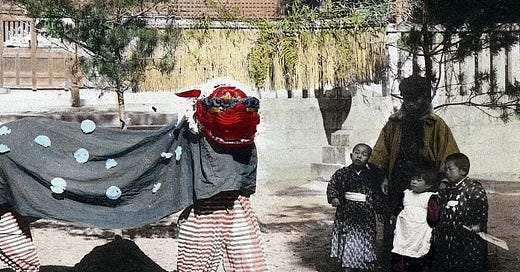



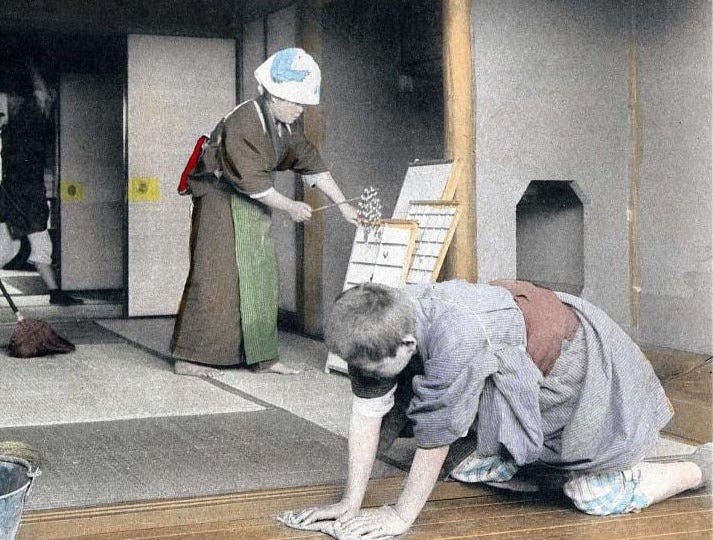
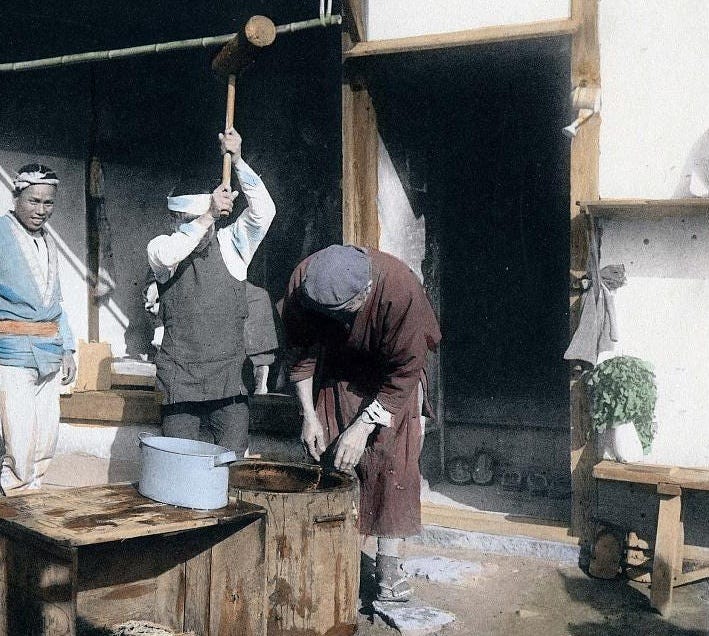
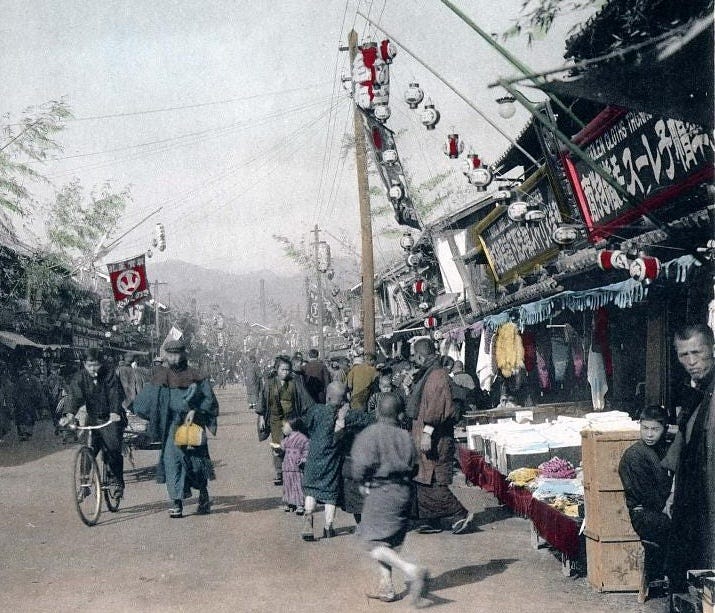

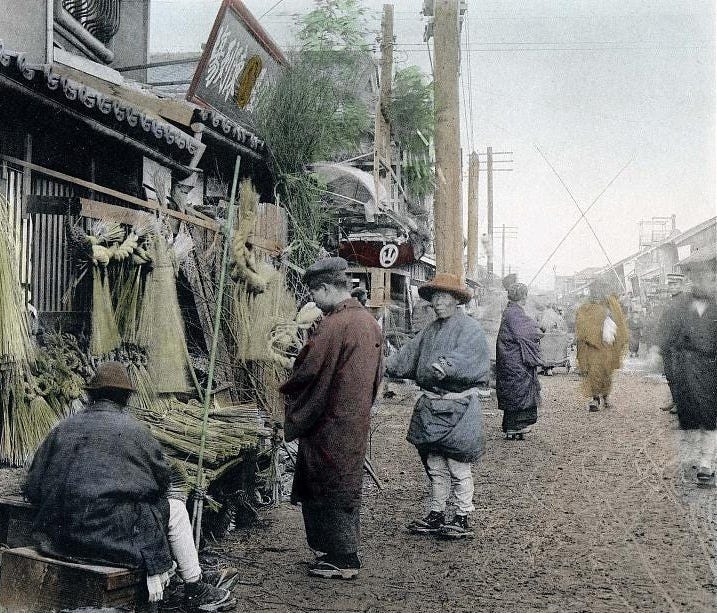
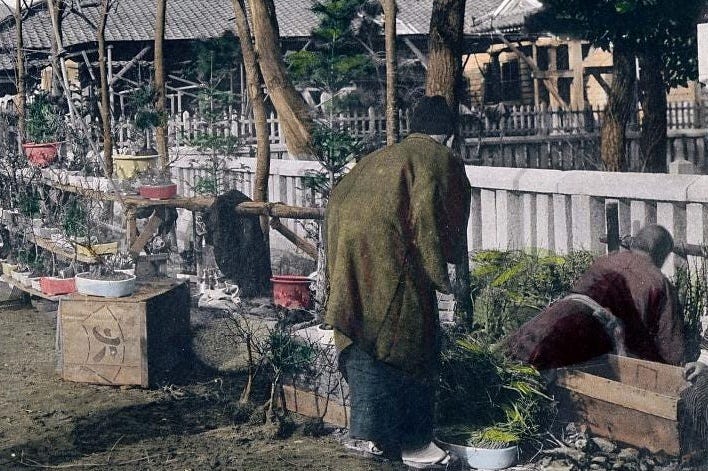
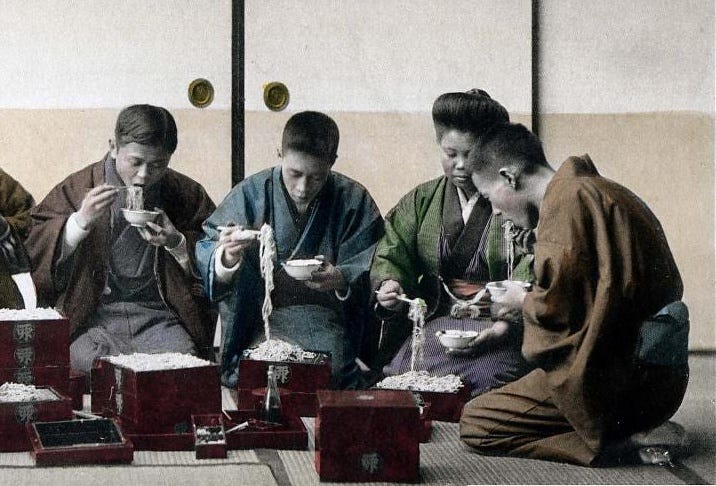
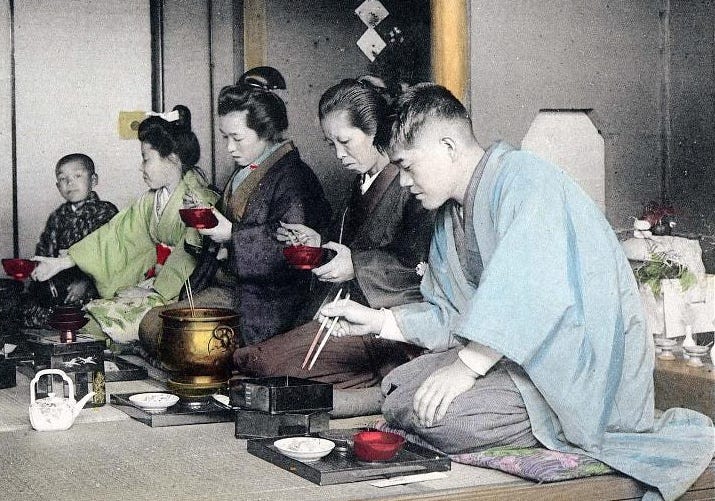

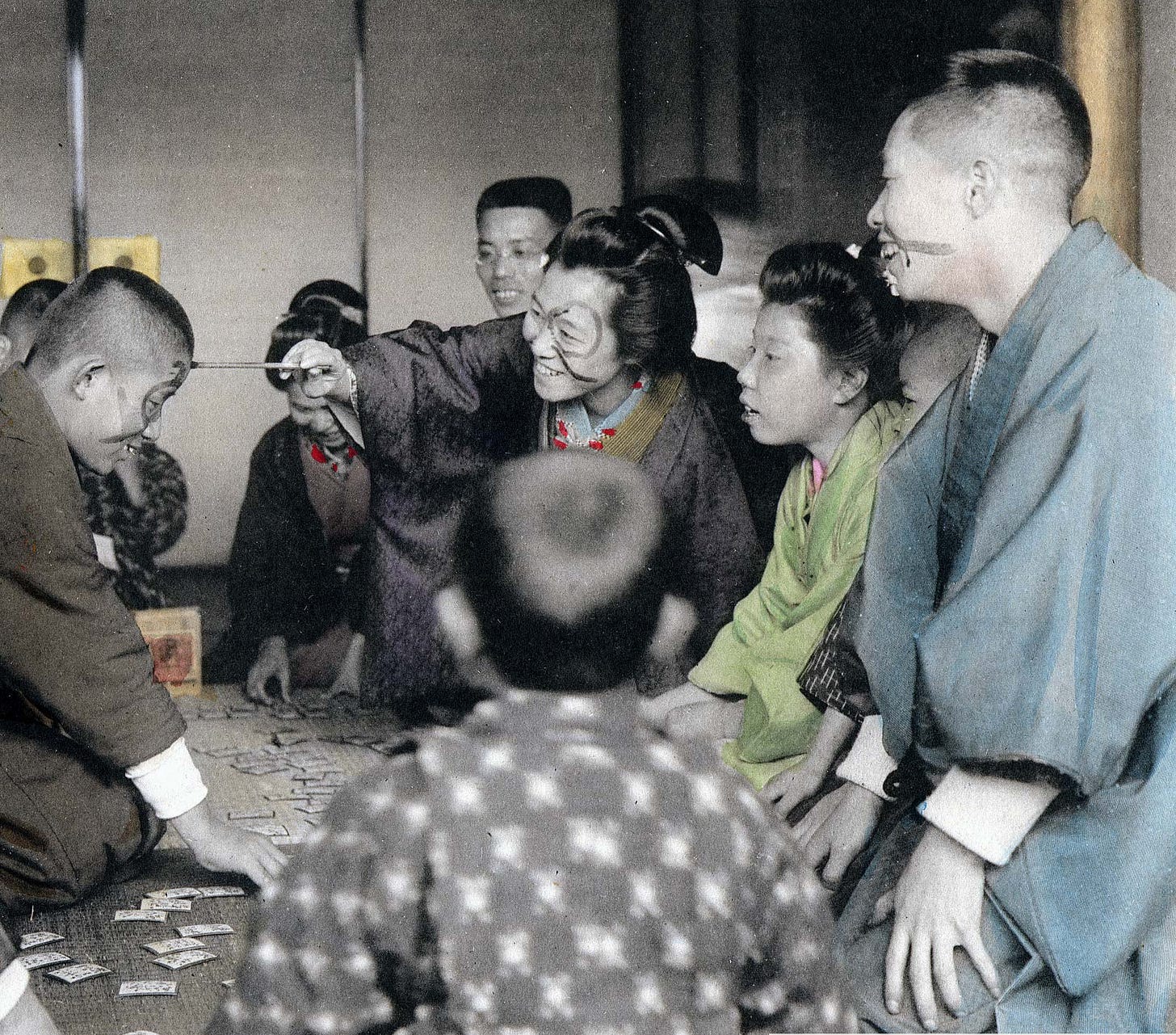
Fantastic photos. Thanks for sharing. Happy New Year.